Spooling is:-
Amplification of DNA
Cutting of seperated DNA bands from the agarose gel
Transfer of separated DNA framents to synthetic membranes
Collection of isolated DNA
The correct Answer is:D
Step-by-Step Solution:
1. Understanding the Term "Spooling":
- Spooling refers to a specific laboratory technique used in molecular biology to collect DNA. It is not related to amplification or cutting of DNA.
2. Differentiating from Other Processes:
- Amplification of DNA: This process is known as PCR (Polymerase Chain Reaction), which is used to amplify DNA samples.
- Elution: This term refers to the process of cutting or extracting separated DNA bands from agarose gel, which is not what spooling is about.
- Blotting: This is the process of transferring separated DNA fragments to synthetic membranes, which also does not relate to spooling.
3. Defining Spooling:
- Spooling is specifically the collection of isolated DNA. This is achieved by wrapping the DNA around a glass rod.
4. How Spooling Works:
- The glass rod is dipped into the solution containing isolated DNA. As the rod is pulled out, the DNA wraps around it, allowing for the collection of the DNA.
5. Conclusion:
- Therefore, spooling is defined as the collection of DNA by wrapping it around a glass rod, making option D the correct answer.
---
- Spooling refers to a specific laboratory technique used in molecular biology to collect DNA. It is not related to amplification or cutting of DNA.
- Amplification of DNA: This process is known as PCR (Polymerase Chain Reaction), which is used to amplify DNA samples.
- Elution: This term refers to the process of cutting or extracting separated DNA bands from agarose gel, which is not what spooling is about.
- Blotting: This is the process of transferring separated DNA fragments to synthetic membranes, which also does not relate to spooling.
- Spooling is specifically the collection of isolated DNA. This is achieved by wrapping the DNA around a glass rod.
- The glass rod is dipped into the solution containing isolated DNA. As the rod is pulled out, the DNA wraps around it, allowing for the collection of the DNA.
- Therefore, spooling is defined as the collection of DNA by wrapping it around a glass rod, making option D the correct answer.
Similar Questions
Figure shows a spool with thread wound on it placed on a smooth plane inclined at angle from horizontal. The spool has mass m, edge radius R, and is wound up to a radius r. its moment of inertia about its own axis is I. The free end of the thread is attached as shown in the figure. So that the thread is parallel to the inclined plane. T is the tension in the thread. Which of the following is correct?
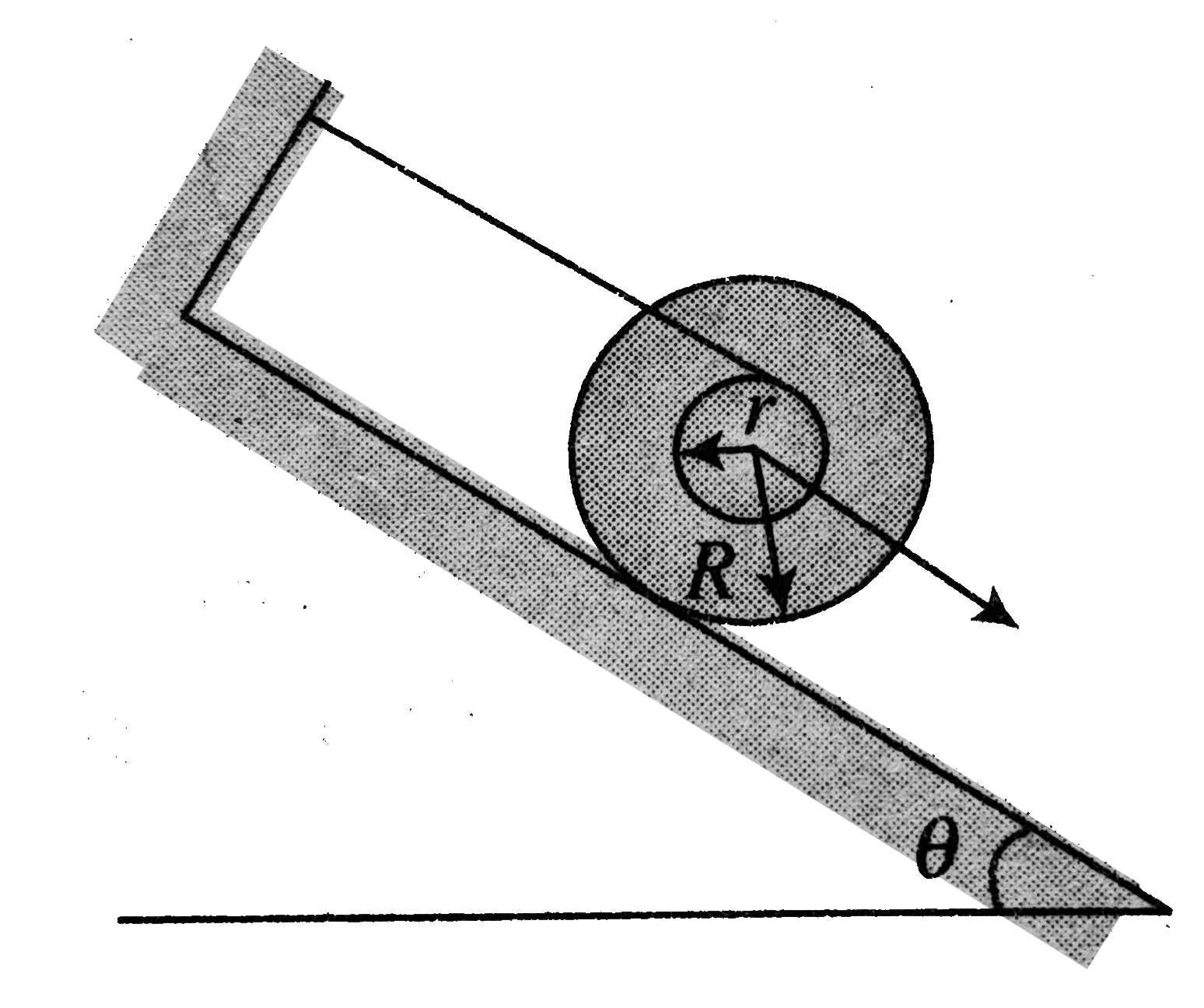
View Solution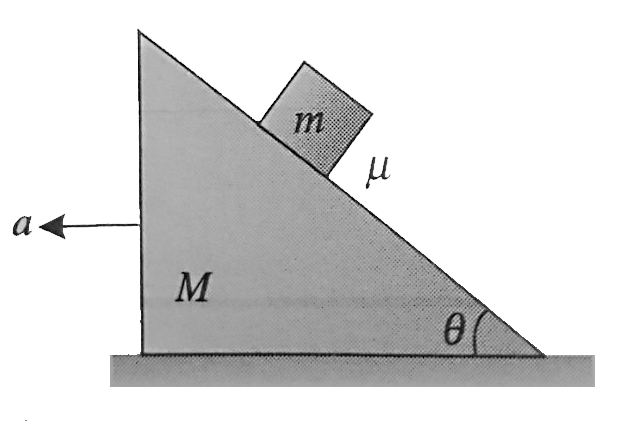
A block of mass m is at rest relative to the stationary wedge of mass M. The coefficient of friction between block and wedge is μ. The wedge is now pulled horizontally with acceleration a as shown in figure. Then the minimum magnitude of a for the friction between block and wedge to be zero is:
View Solution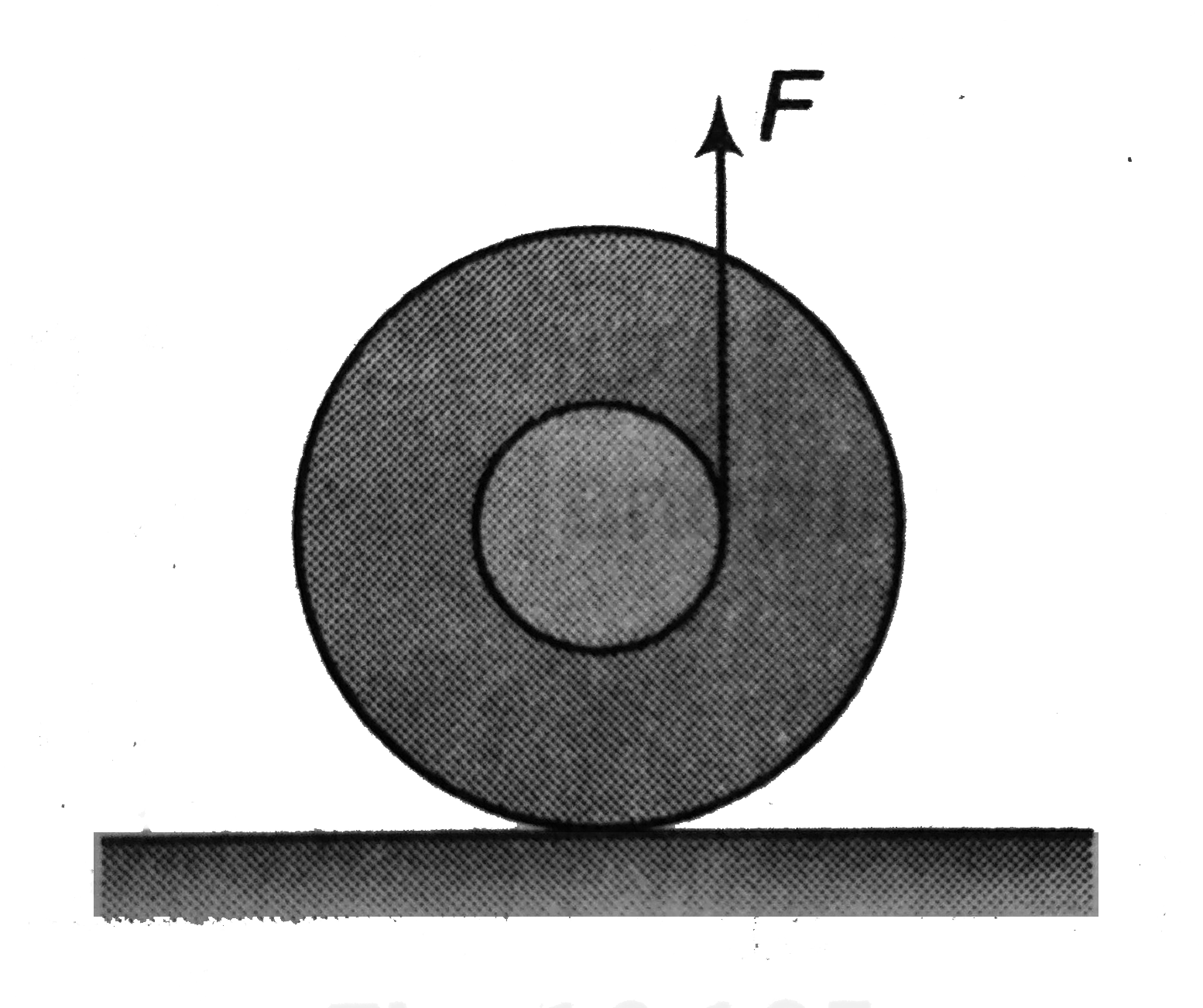
A spool is pulled by a force in vertical direction as shown in figure . What is the direction of friction in this case? The spool does not loose contact with the ground.
View Solution
A spool is pulled at an angle θ with the horizontal on a rough horizontal surface as shown in the figure. If the spool remains at rest, the angle θ is equal to
View SolutionA time varying force F=2t is applied on a spool as shown in figure. The angular momentum of the spool at time t about bottommost point is

View Solution
A spool is pulled horizontally on rough surface by two equal and opposite forces as shown in the figure. Which of the following statements are correct?
View SolutionThe spool shown in the figure is placed on a rough horizontal surface and has inner radius r and outer radius R. The angle θ between the applied force and the horizontal can be varied. The critical angle θ for which the spool does not roll and remains stationary is given by
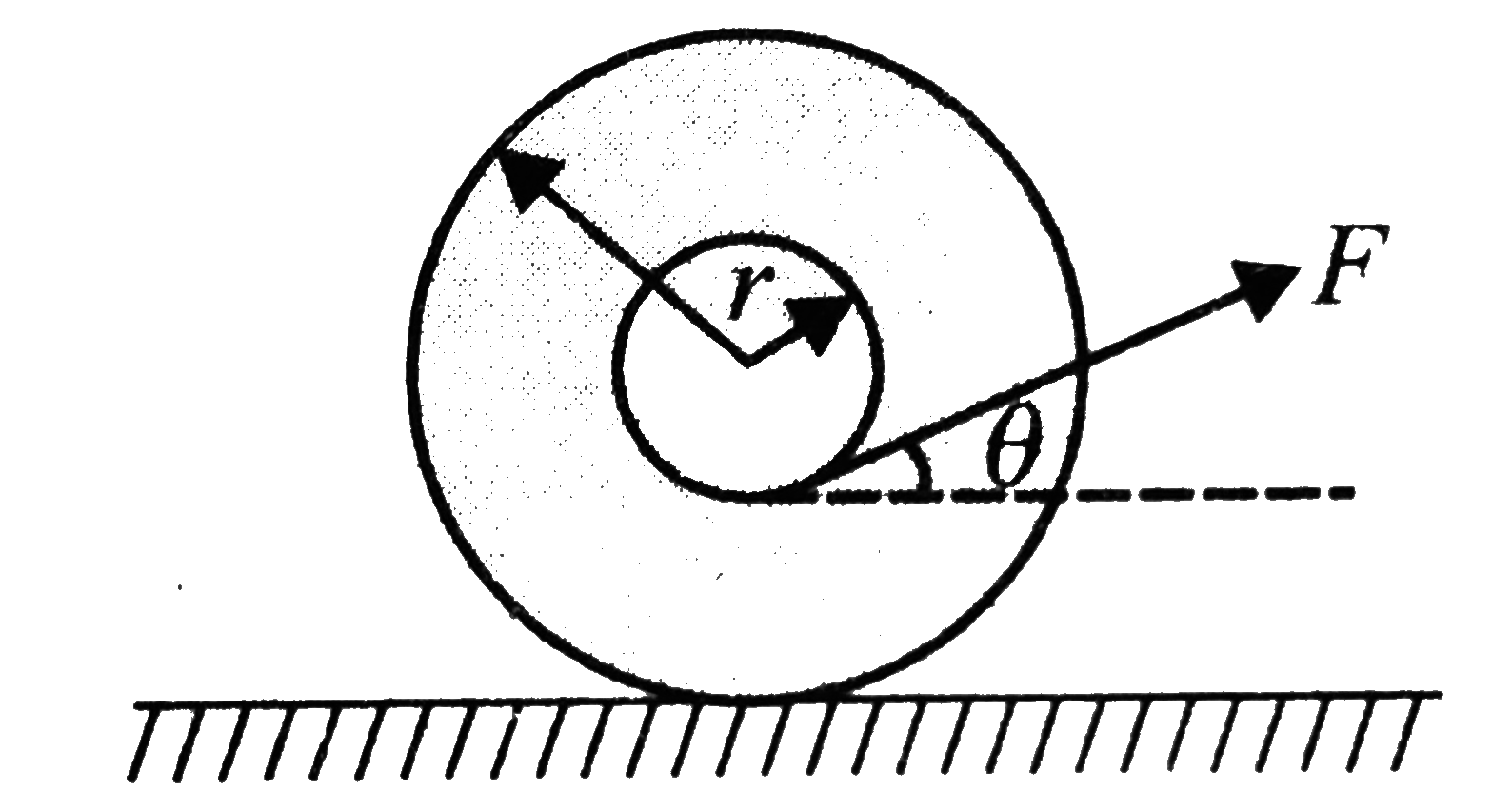
View SolutionA force F is applied onn a spool (mass m and radius R) in vertical direction as shown in case I and case II. The radius of gyration k of spool is R/(√2). Assuming pure rolling, find the acceleration of the CM of the body, assuming it as a uniform cylinder of mass m.
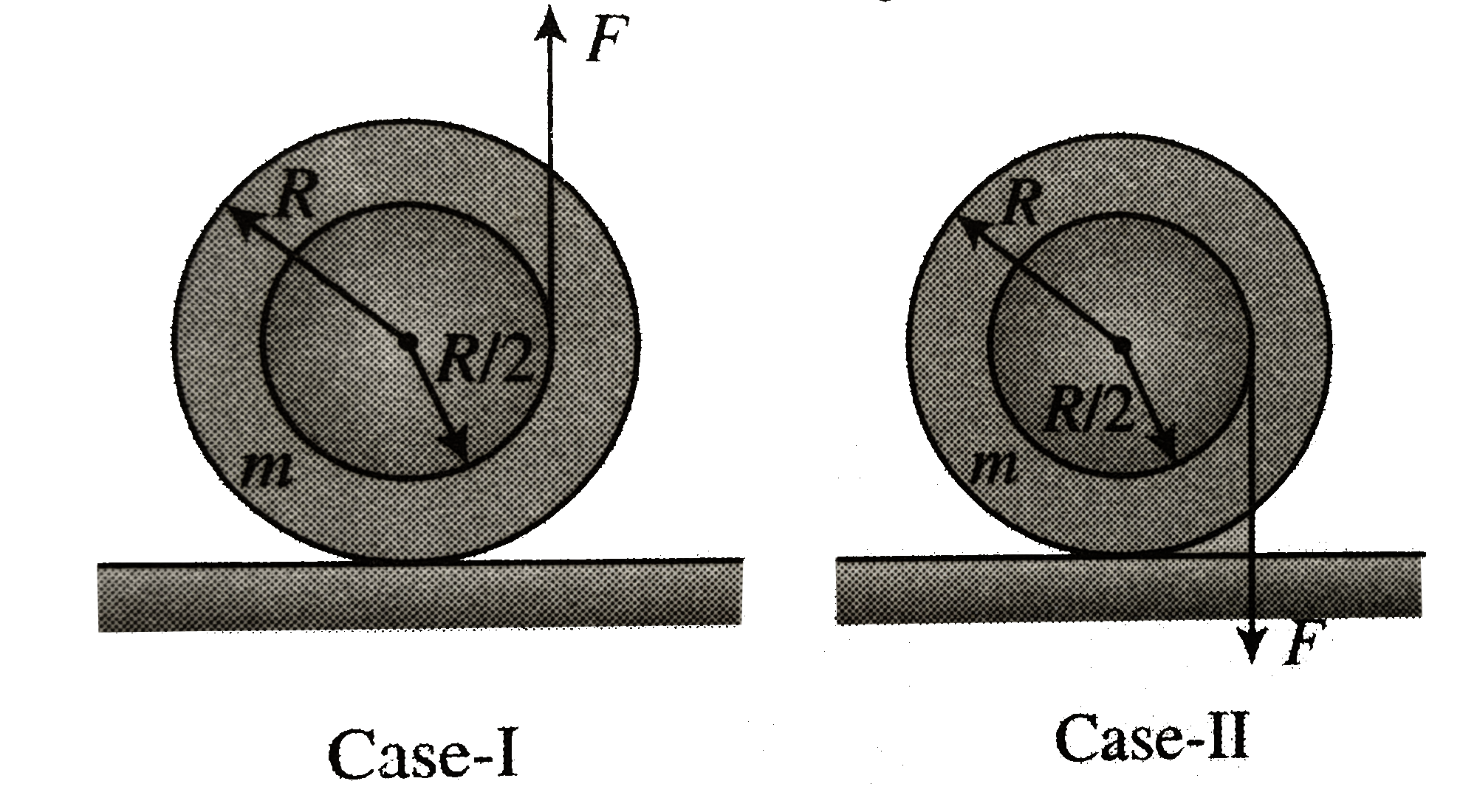
View SolutionChoose the correct option:
A spool of wire rests on a horizontal surface as shown in figure. As the wire is pulled, the spool does not slip at contact point P. On separate trials, each one of the force F1,F2,F3 and F4 is applied to the spool. For each one of these forces the spool.
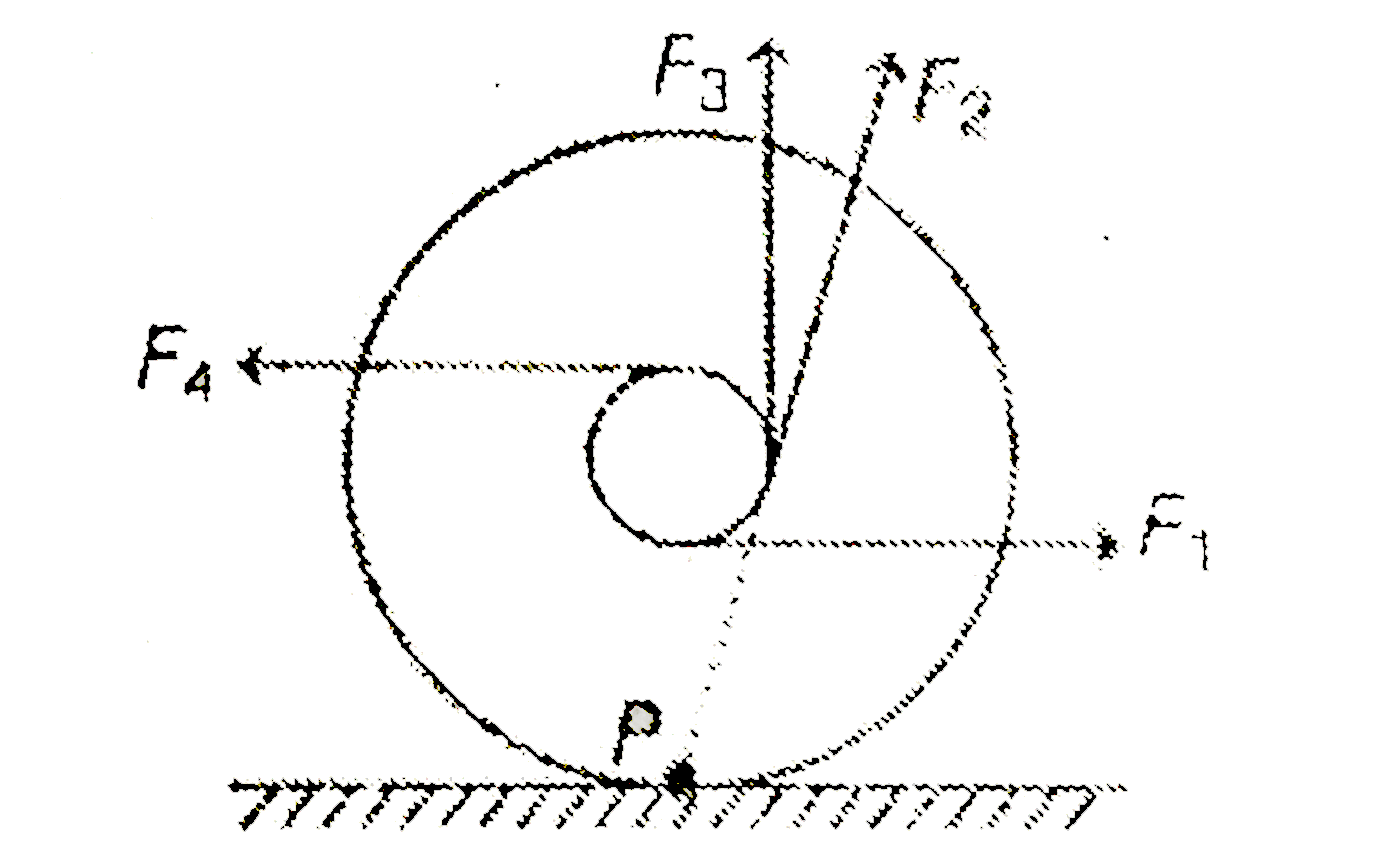
View SolutionA spool of mass M = 3 kg and radius R = 20 cm has an axle of radius r = 10 cm around which a string is wrapped. The moment of inertia about an axis perpendicular to the plane of the spool and passing thorugh the centre is MR22. If the coeffiecient of friction between the surface and the spool is 0.4 then the maximum tension which can be applied to the string for which the spool doesn't slip, is 9g=10ms−2]
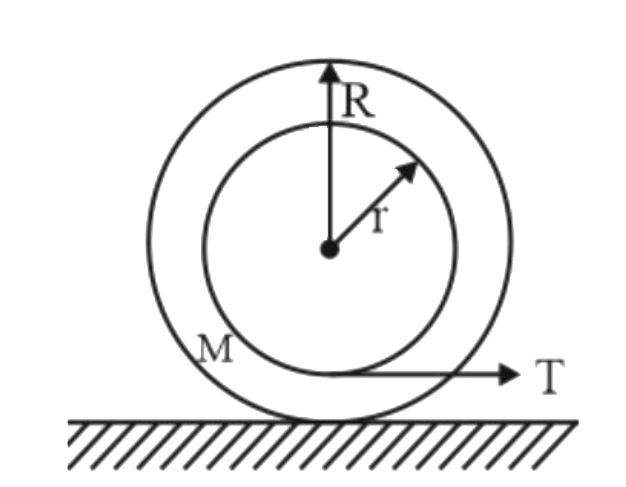
View Solution
